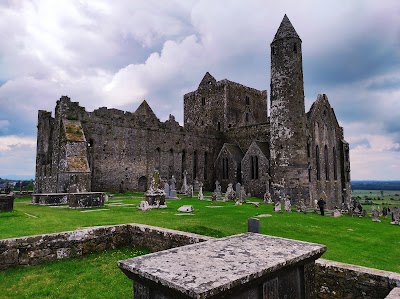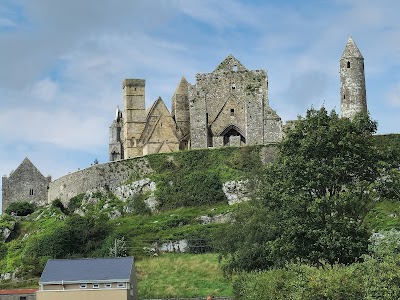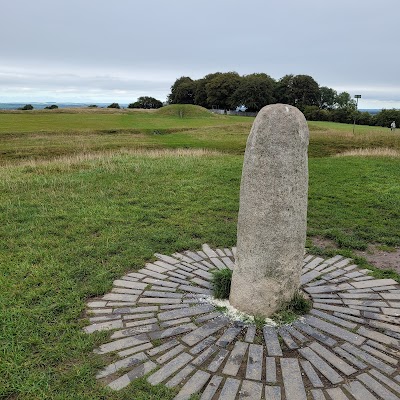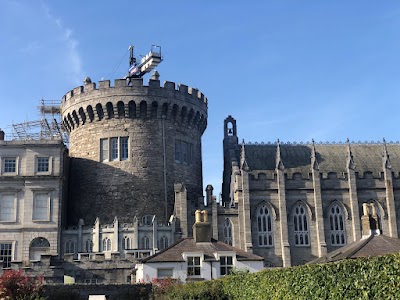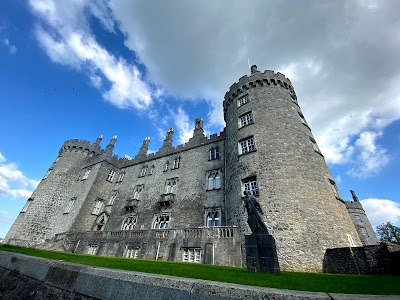Rock of Cashel (St. Patrick's Rock)
Overview
The Rock of Cashel, also known as St. Patrick’s Rock, is a captivating historical site nestled in County Tipperary, Ireland. Renowned for its stunning collection of medieval buildings, this archaeological gem perches majestically on a limestone outcrop in the Golden Vale, offering breathtaking panoramic views of the surrounding countryside. It stands as one of the most iconic and well-preserved sites in Ireland, steeped in history and beauty.
The rich history of the Rock of Cashel stretches back over a millennium. According to legend, this site was once the seat of the kings of Munster, where St. Patrick is said to have converted King Aengus to Christianity in the 5th century. Over time, it evolved into a significant ecclesiastical center, becoming a pivotal hub of power and religion in Ireland.
One of the standout attractions within the complex is Cormac’s Chapel, built between 1127 and 1134. This remarkable structure showcases Romanesque architecture, notable for its advanced design for the era. Visitors can marvel at the intricately carved doorway and vaulted ceilings, which reflect the exceptional craftsmanship of medieval builders. Inside, traces of rare frescoes reveal the artistic endeavors of that time, inviting guests to step back into history.
Adjacent to the chapel, the Round Tower rises impressively, dating back to around 1100. Standing at 28 meters tall, this tower likely served as both a bell tower and a refuge during attacks. Its doorway, elevated high above the ground, exemplifies the design of Irish round towers, accessible only by a ladder that could be pulled up in times of danger.
The Cathedral, constructed between 1235 and 1270, is another remarkable edifice that dominates the Cashel skyline. With its grand cruciform shape and stunning Gothic architecture, the cathedral has weathered significant changes over the centuries, including damage during the Cromwellian invasion in the 17th century. Despite its tumultuous past, it remains an awe-inspiring structure featuring soaring arches and intricate stonework.
Next to the cathedral lies the Hall of the Vicars Choral, dating back to the 15th century. Once the residence of the singing priests who performed in the cathedral’s choir, this hall now houses an exhibition that delves into the site’s history and significance throughout the ages. Visitors can explore this well-preserved building and envision the daily lives of its former inhabitants.
Additionally, the Rock of Cashel features a collection of beautifully preserved high crosses, with St. Patrick’s Cross standing as a prominent symbol at the edge of the site. This enduring cross has withstood centuries of Irish history, embodying the rich cultural heritage of the nation.
For those intrigued by the past, there is a small graveyard on the premises, where many historical figures rest. The atmospheric setting, complete with ancient tombstones and Celtic crosses, offers a fascinating glimpse into Ireland’s storied past, creating a somber yet captivating experience.
One of the highlights of a visit is the panoramic view from the Rock of Cashel. Perched high above the landscape, the site provides breathtaking vistas over the lush, rolling plains of the Golden Vale. On clear days, visitors can see for miles, making it an ideal spot for photography or simply soaking in the beauty of the Irish countryside.
To enhance your visit, the site offers guided tours, providing deeper insights into the history and architectural intricacies of the Rock of Cashel. A visitor center is also available, featuring informative displays, souvenir shops, and a cozy café where tourists can relax and refresh.
As one of Ireland’s premier tourist attractions, the Rock of Cashel is a must-visit for anyone fascinated by history, architecture, and Irish culture. With its rich tapestry of stories, impressive structures, and scenic beauty, it promises a unique and enriching experience that lingers long after you leave.
In conclusion, the Rock of Cashel is not just a remarkable historical site; it stands as a vivid symbol of Ireland’s complex past and enduring cultural legacy. Its impressive architecture, intriguing tales, and breathtaking views make it an unforgettable destination for any traveler exploring the Emerald Isle.


